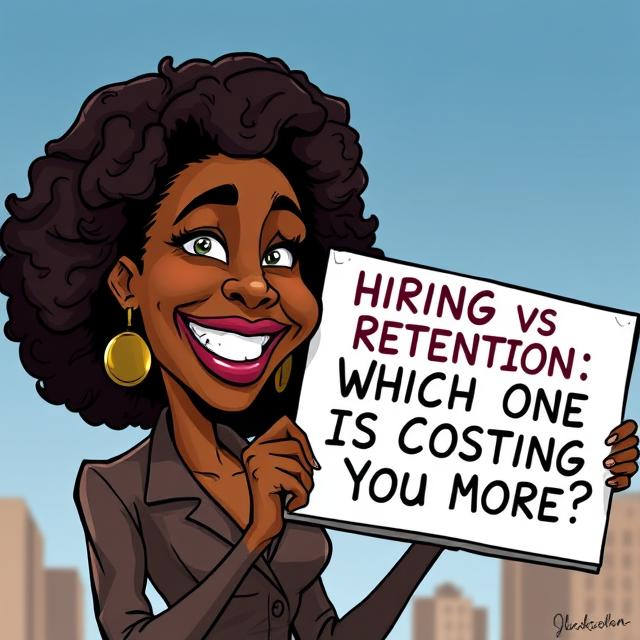Hiring vs Retention: Which One Is Really Costing You More?
Is Hiring New Talent Costing You More Than Keeping the Ones You Have?
If you work in HR, you may have wondered if it is actually cheaper to retain a current employee rather than hire a new one.
This blog simplifies the hiring process, making it clear, practical, and relevant. I will explore the various costs associated with hiring a new employee, including the time spent reviewing resumes, as well as the expenses of onboarding and training. Additionally, I will address less obvious costs, such as lost productivity and the time managers spend conducting interviews.
Then I will compare that to what it takes to keep your best people happy and growing in their roles. Retaining is usually the smarter move, both for your budget and your company culture.
This post is for HR leaders who want to be more strategic with their time, energy, and hiring budgets. It's packed with insights you can use in your next boardroom pitch or talent planning session.
I will be looking to answer the following:
- What hiring really costs in both money and time
- Why interviewing drains more resources than you think
- How much does it take to fully onboard and train a new hire
- The case for investing in retention
- Smart ways to cut costs without cutting corners
1. Let’s Start Here — Why This Question Even Matters
You just lost a great employee. Everyone says, “No worries, so we’ll hire someone new.”
But the truth is, replacing that person is probably going to cost more than you think —and not just in cash
This is why HR needs to understand the full cost picture
2. What It Really Costs to Hire Someone New
Let’s break it into two parts
a. Direct costs
- Job ads, recruitment tools, or agency fees
- Software subscriptions and screening tools
Background checks and pre-employment tests
b. Indirect costs
- The time HR and hiring managers spend reviewing CVs
- Hours lost in back-to-back interviews
- The productivity dip occurs while the role sits unfilled
Some studies show it can cost up to 30 percent of an employee’s annual salary to bring in someone new
3. Interviewing Takes More Time Than You Think
Think about it
- You need at least two or three internal people to do interviews
- There's back-and-forth scheduling
- There’s prep time, post-interview feedback, and alignment calls
Now multiply that across five or six candidates. That’s a whole week’s worth of time spent just trying to find the right fit. And that’s before they’ve even joined
4. The Real Cost of Training a New Hire
Even the best hire needs time to settle in
- There’s onboarding and orientation
- They’ll need support from other team members
- Mistakes are more likely when they learn the ropes
It often takes three to six months before a new employee hits full productivity. And during that time, someone else is picking up the slack
5. So What About Retention
Here’s the good news. Keeping your current people is not just better for culture. It’s usually a lot cheaper, too
- Retention investments could include
- A small salary bump
- New responsibilities or a clearer growth path
- More flexible work arrangements
- Learning and development opportunities
These things often cost less than what you’d spend to replace someone
6. To Be Fair, Sometimes You Still Need to Hire
Of course, not every exit can be prevented
Some turnover is healthy. Sometimes you need fresh ideas or skills your team doesn’t yet have
But if turnover is happening too often, it’s worth asking why and what it’s really costing you
7. What You Can Do Next
- Do a quick cost analysis of your last few hires
- Compare it to what you spend on retention programs
- Ask your team what would make them stay
- Build a simple retention strategy that fits your culture
- Pitch it to leadership as a long-term cost-saving move
8. Final Thought
Hiring is part of the job, no doubt. But if you can keep your best people around a little longer, you’ll save money, keep your team stronger, and spend less time starting from scratch.

.jpeg)
.jpeg)
Comments
Post a Comment